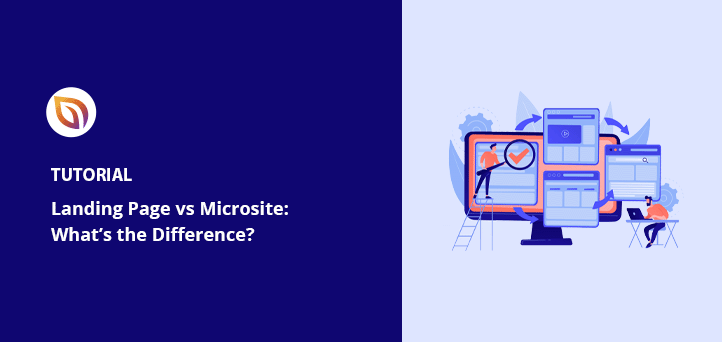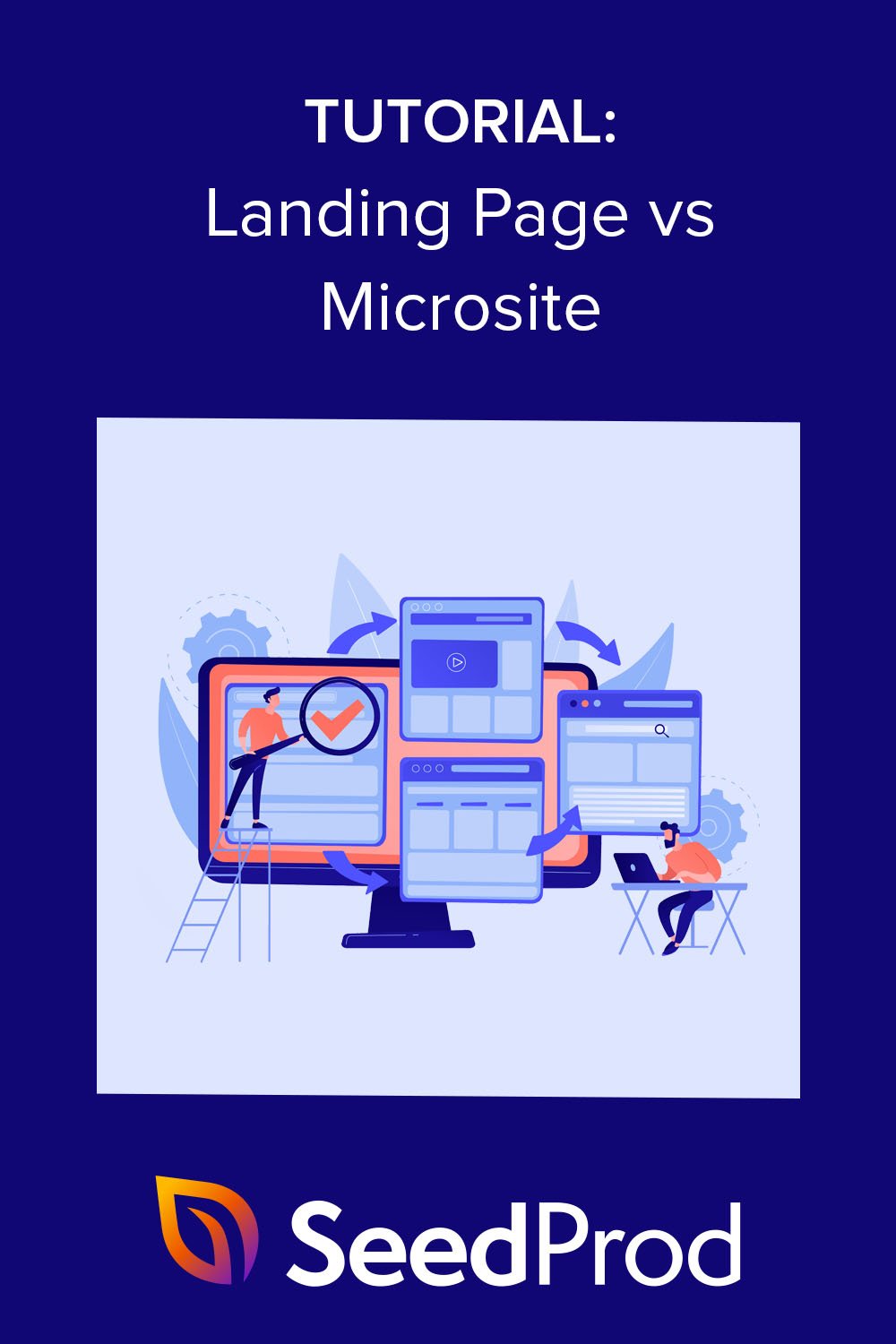Do you want to know the difference between a landing page vs microsite?
Both of these assets can help promote your digital marketing campaigns. However, landing pages and microsites have significant differences you might miss at first glance.
Today, we’ll explain the differences between landing pages and microsites so you can decide which one is best for your small business.
Landing Page vs Microsite:
Let’s kick things off by defining the microsite.
What Is a Microsite?
A microsite is a small website with two or three pages created for a specific purpose, such as promoting a product, campaign, or topic. It’s separate from the main company website and usually has its own web address to focus on a single message or goal.
What Are Microsites Used For?
Microsites are used to highlight specific products, campaigns, or events. Companies build them to reach certain audiences, share focused content, or try out new ideas separately from their main website. This approach helps boost engagement and encourage more customer actions.
For instance, you can use a microsite to:
- Target a specific audience in search engines with a new message
- Countdown to a specific product launch
- Test specific campaign initiatives, additional domains, and marketing messages
- Educate your audience on a particular topic
- Spark interest in an upcoming event
In many cases, microsites are temporary, expiring once a marketing campaign is over.
For example, the famous “Elf Yourself” campaign exists on a microsite you can visit over the holiday period. Still, outside of the festive season, it displays a coming soon page like this:
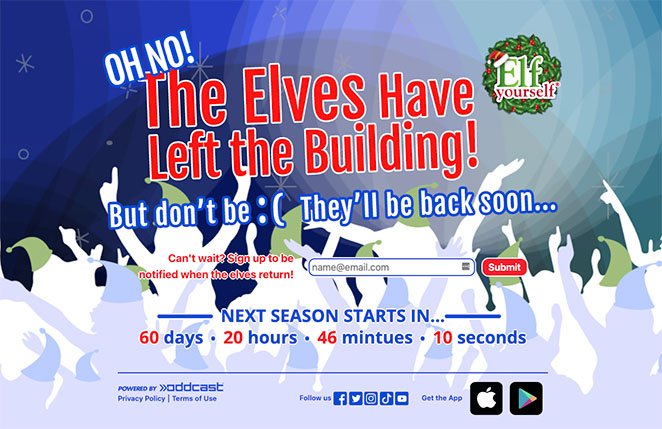
What Is a Landing Page?
A landing page is a single web page designed for marketing. It’s the first page people see after clicking a link, like an ad, and aims to get visitors to take one specific action, like signing up or buying something.
What Are Landing Pages Used For?
Landing pages help encourage visitors to take one specific action, like signing up, buying something, or downloading a file. Businesses use them to keep visitors focused on a single offer, making it easier to turn them into customers or leads.
For instance, you can use a landing page to:
- Promote free downloads to grow your email list
- Advertise eCommerce flash sales with an urgent call-to-action (CTA)
- Encourage visitors to register for a webinar or event
- Convince users to sign up for a free trial or demo
- Promote a new product or service
- Market a giveaway or contest
Here is an example of a landing page from OptinMonster. They use the page to promote a particular product feature for their PPC ad campaign.
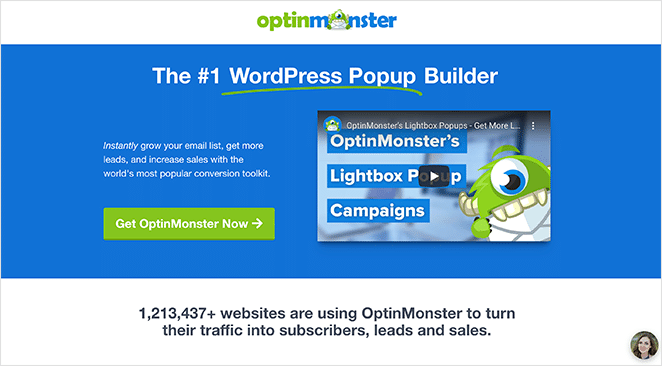
As you can see, it only has a single page, has no navigation, and includes a strong call-to-action.
What Are the Differences Between Landing Pages and Microsites?
The main difference between landing pages and microsites is their focus and size.
A landing page is a single page designed to get visitors to take one quick action, like signing up or buying. A microsite, however, is a small website with multiple pages created to explore a specific topic or campaign in more depth.
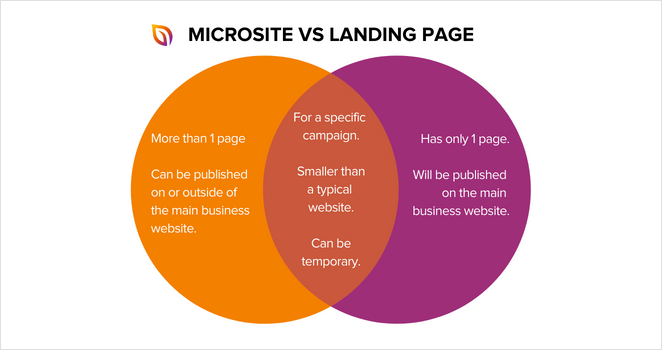
How Are Microsites and Landing Pages Similar?
A microsite and a landing page both present targeted content for specific marketing goals. A microsite is a small, separate website, while a landing page is a single page designed to drive actions, often within a larger site.
They also include high-quality information to promote your online presence and achieve your marketing strategy’s goals.
Strengths and Weaknesses of a Microsite
Microsites sit on a fine line between educating audiences and lead generation. They have a homepage like a full website, and can exist on a different domain to your main site.
Because a microsite has multiple pages, you can conduct search engine optimization (SEO) to attract organic traffic.
| Feature | Strength | Weakness |
|---|---|---|
| Content | More informative and educational; can host more content than a landing page | Can be less focused on conversions |
| Engagement | More engaging and entertaining; richer user experience | Can include distracting elements (e.g., external links, multiple CTAs) |
| SEO | Can be optimized for organic search traffic | More complex and time-consuming to set up and optimize |
| Cost | Can require additional domain names and higher maintenance costs | |
| Conversion | Can have multiple calls-to-action | May be less effective at driving conversions due to competing elements and length |
| Structure | Multiple pages and navigation options | Requires more scrolling; can lead to lower conversion rates |
For example, Blue Heart of Europe created a microsite like this:
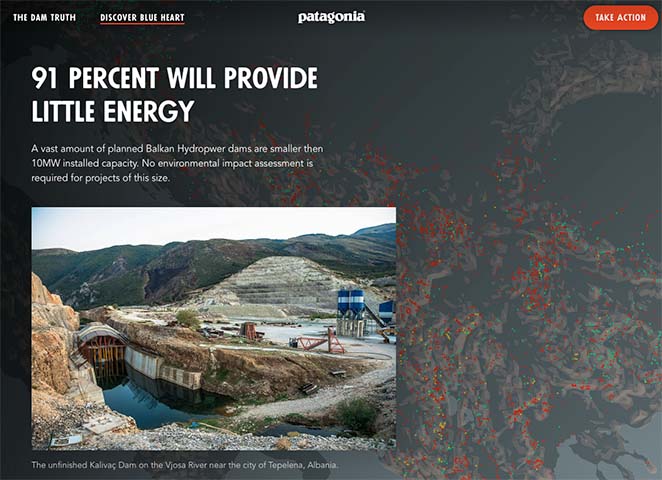
It uses parallax scrolling to teach visitors about the environmental damage caused by hydroelectric dams. While its visually rich user experience holds attention and educates visitors, it’s not the best at converting.
That is because it:
- Includes multiple links and social media buttons that take people away from the site
- Has different calls-to-action that compete for conversions
- Requires visitors to scroll for a long time to reach the bottom of the page
- Lacks persuasive elements like testimonials and social proof
Microsites can be costly to maintain because you’ll need to buy additional domain names to create one. Plus, they take longer to set up and optimize.
Even though the microsite isn’t the best at converting visitors, it’s still useful. You’ll leave knowing more about the cause than when you started, precisely what the intention was – to raise awareness.
Overall, microsites are smaller, more targeted websites that entertain and inform.
Strengths and Weaknesses of a Landing Page
Landing pages convert your website visitors into leads and potential customers. Unlike microsites, they focus first on persuasive design and put less emphasis on entertainment.
Brands use landing pages to convey facts, testimonials, and figures in the briefest way possible to convince users to take action.
| Feature | Strength | Weakness |
|---|---|---|
| Focus | Persuasive design; emphasis on conversion | Less emphasis on entertainment; not as engaging as a microsite |
| Content | Concise delivery of facts, testimonials, and figures | Less information than a microsite |
| Bounce Rate | Brevity can help keep bounce rates low | |
| SEO | Drives traffic to a specific URL | |
| Tracking | Allows for tracking and data gathering (UTM tags, short-links) | |
| Development | Easier to create than a microsite |
Take this ebook landing page example from Taboola:
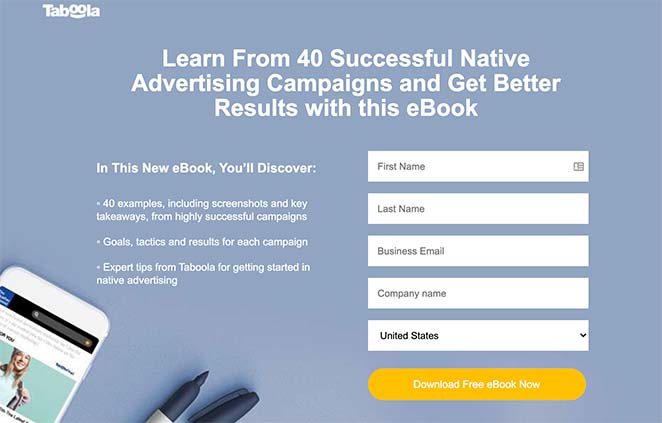
The page is likely excellent at converting visitors, but it’s not entertaining. There aren’t any cool transition effects or videos.
This page tells you why you should download the ebook, and it does it quickly without wasting time. The brevity of landing pages can help keep bounce rates low.
Landing pages can also help with search engine optimization by driving traffic to a specific URL. Moreover, they allow for tracking and data gathering thanks to UTM tags and short-link services.
While landing pages are easier to create than microsites, they also have their weaknesses. For one, they’re not as engaging as a complete microsite and offer less information to visitors.
When to Use Microsites vs. Landing Page
If you want to decide whether to use a landing page or a microsite, you’ll need to look at the size of your team, campaign type, and budget. But when it comes to your overall goal, keep this in mind:
Microsites are best for raising brand awareness while landing pages are best for converting.
To create a landing page or microsite, you’ll need to hire someone to develop it, or you can use WordPress to build it yourself.
With a powerful website builder like SeedProd, you can create landing pages and microsites without touching a single line of code and don’t need to be a technical wiz.
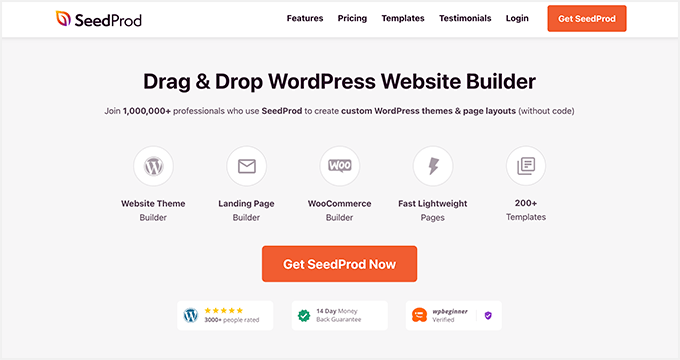
SeedProd comes with whole libraries of Website Kits and landing page templates you can use to get started quickly. With its visual drag-and-drop builder and powerful blocks and sections, you can customize any design to suit your campaign with a few clicks.
You can also use SeedProd to:
- Create a custom WordPress theme
- Build a WooCommerce website
- Make a coming soon page
- Put WordPress in maintenance mode
- Add a custom login page
- Create an engaging 404 page
- Built multiple landing pages with custom domains
- And much more.
This powerful WordPress plugin integrates seamlessly with email marketing tools and automation services, making it super easy to collect email addresses and leads.
So what are you waiting for?
In this in-depth guide, we’ve explained the difference between a landing page vs. a microsite and told you when to use them. You might also like these other helpful guides:
- What Is a Dynamic Landing Page (+ How to Make One in WordPress)
- Landing Page vs. Website: What’s The Difference?
- What Is a Splash Page + 9 Steps to Create Your Own
- Landing Page vs Sales Page: Which One is Right for You?
Thanks for reading! We’d love to hear your thoughts, so please feel free to leave a comment with any questions and feedback.
You can also follow us on YouTube, X (formerly Twitter), and Facebook for more helpful content to grow your business.

